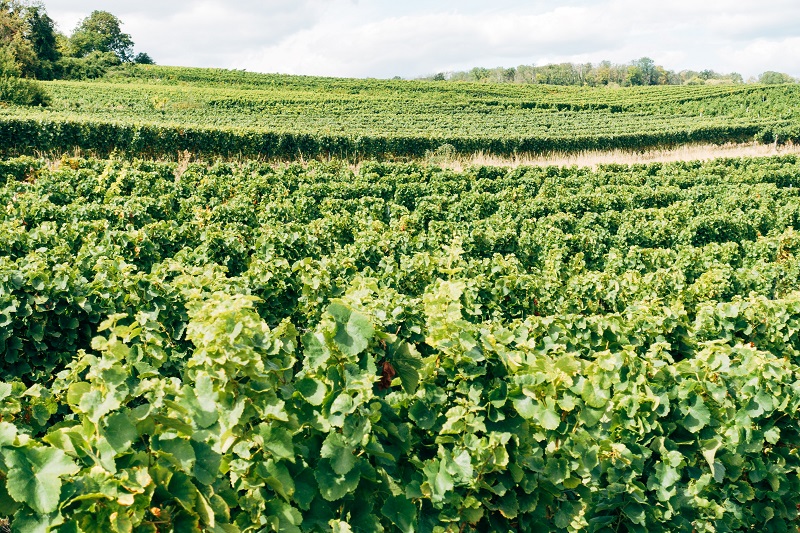Work Ahead! 6 Pointers for Preseason Planning on the Farm
Preseason planning is essential to successful farming, as it helps you get organized and prepared for the upcoming growing season. Before the planting season begins, tasks such as reviewing finances, assessing equipment and infrastructure, as well as planning crop rotations must be completed.
Here are a few tips that will help you get your operation ready for the growing season while also setting you up for success in the long term.
Preseason Planning Tip 1: Review Your Farm’s Financial Records
Before the growing season begins, reviewing your farm’s financial records is vital to assess your financial situation and set budget goals. This will help you determine the resources available to invest in your operation and identify areas for cost savings.
To review your financial records, gather all of your financial documents, such as income statements, balance sheets, and cash flow statements. Review these documents to understand your farm’s economic performance over the past year. Look for trends in your income and expenses, and identify areas where you can improve.
Set budget goals for the upcoming growing season based on your financial review. Consider factors such as your expected income, the cost of inputs and labor, and any investments you plan to make. Setting budget goals will help you allocate your resources effectively and ensure you have the resources needed to meet your objectives.
In addition to setting budget goals, you could also look for opportunities to reduce costs. Identify areas where you may be able to cut back on expenses, such as reducing the use of inputs or finding ways to streamline your operations. By identifying areas for cost savings, you can free up resources to invest in other areas of your farm.
Preseason Planning Tip 2: Evaluate Your Equipment and Infrastructure
Before the growing season begins, taking stock of your equipment and infrastructure is crucial to ensure everything is in good working order. This includes inspecting and maintaining your equipment and determining any necessary repairs or upgrades.
To inspect and maintain your equipment, start by reviewing your inventory and checking for any damaged or worn parts that need replacement. Make a list of any repairs or maintenance required, and prioritize the most critical tasks.
In addition to repairing and maintaining your existing equipment, you should evaluate whether any upgrades or new equipment purchases are necessary. Consider factors such as your equipment’s age and condition and future needs and goals. Investing in new or upgraded equipment can improve your farm’s efficiency and productivity while saving money in the long run.
By evaluating your equipment and infrastructure, you can ensure you have the tools and resources you need to succeed in the upcoming growing season.
Preseason Planning Tip 3: Plan Your Crop Rotations and Field Preparations
Before the growing season begins, it is essential to plan your crop rotations and field preparations to ensure that your fields are ready for planting. There are several factors to consider when planning crop rotations and field preparations, including soil health, pest and disease management, and market demand.
To begin, consider the health of your soil and the nutrient needs of the crops you plan to grow. If your soil is depleted or lacks certain nutrients, you may need to apply fertilizers or organic amendments to improve its fertility. You should also consider the impact of different crops on soil health, as some crops can deplete soil nutrients or contribute to soil erosion. By rotating your crops and applying the appropriate inputs, you can help maintain the long-term health of your soil.
In addition to soil health, you should consider pest and disease management when planning your crop rotations. Some crops are more susceptible to certain pests and diseases, so rotating your crops can help reduce the risk of these problems. To protect your crops, you could also consider using pest and disease control measures, such as pesticides or biopesticides.
Finally, you should also consider market demand when planning your crop rotations. Research local and regional markets to determine which crops are in demand and plan your crop rotations accordingly. This will help you maximize your profits and ensure that you are growing crops that are in demand.
Once you have planned your crop rotations, it is time to develop a plan for preparing your fields for planting. This may include tasks such as tillage, planting cover crops, applying fertilizers and other inputs, and planting your crops according to your plan. Following a thorough field preparation plan can ensure that your fields are ready for the growing season and set your crops up for success.
Preseason Planning Tip 4: Order Supplies and Input Materials
As the growing season approaches, ordering the supplies and input materials you will need to support your operation is important. This includes items such as seeds, fertilizers, pesticides, and other input materials.
To determine your needs for these items, review your farm’s financial records and budget goals, and consider the requirements of the crops you will grow. Make a list of the supplies and input materials you will need, and consider purchasing these items in bulk to take advantage of discounts.
Once you have determined your needs, place your orders in advance to ensure availability. Many suppliers offer early ordering discounts or other incentives for placing orders ahead of time, so it is often best to order as early as possible. By ordering your supplies and input materials in advance, you can save time and money when the growing season begins.
Preseason Planning Tip #5: Prepare the Soil
Before planting, it is essential to prepare the soil to ensure that your crops have the best possible chance of success. This involves taking steps to improve the soil’s physical, chemical, and biological properties and controlling weeds and pests.
To prepare the soil, you may want to conduct a biological soil test to determine the soil’s health, i.e., nutrient pathways, stress adaptation, biodiversity, disease risks, and more. Based on the soil test results, you can apply fertilizers or other inputs to correct deficiencies or imbalances. Also, add compost or other organic matter to the soil to improve its structure and fertility.
In addition to adding nutrients and improving soil structure, it is also essential to control weeds and pests in the ground. Weeds can compete with your crops for water, nutrients, and light, while soil-borne pests can damage roots and reduce crop yields. To control these problems, you can use techniques such as hand-weeding, mulching, and applying herbicides or biopesticides.
Finally, you may also want to consider exploring techniques like cover cropping and no-till planting to improve soil health and reduce erosion. Cover cropping involves planting a cover crop, such as a legume or grass, between your main crops to improve soil fertility and structure and reduce erosion. No-till planting involves planting your crops directly into the soil without tilling, which can reduce erosion and improve soil structure. Both of these techniques can help improve soil health and increase crop yields in the long term.
Preparing the soil before planting can give your crops the best possible chance of success and maximize your farm’s productivity.
Preseason Planning Tip 6: Implement Sustainable Practices
There are many ways to incorporate sustainability into your farm’s preseason planning, including:
1. Reducing energy and water use: Look for opportunities to reduce your energy and water consumption, like using more efficient irrigation systems or adopting drought-tolerant crops.
2. Recycling and composting: Implement recycling and composting programs on your farm to reduce waste and improve soil health.
3. Using sustainable inputs: Consider using organic or biological inputs, to reduce your reliance on agrochemicals.
4. Implementing conservation practices: Adopt conservation practices, such as cover cropping or no-till planting, to improve soil health and reduce erosion.
By implementing these and other sustainable practices, you can help reduce your farm’s environmental impact and support your operation’s long-term health and sustainability.









